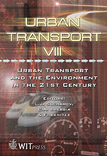Business Structure And Localization Affects Transport Generation And Traffic Flow
Price
Free (open access)
Transaction
Volume
60
Pages
10
Published
2002
Size
468 kb
Paper DOI
10.2495/UT020091
Copyright
WIT Press
Author(s)
M. Pettersson
Abstract
Goods transports are increasing faster than the GNP and they are increasing most in the urban areas, which are great production and consumer areas, There are very little data referring to urban goods transports, and national statistics do not allow analyses on the intra- or interurban level. Studies indicate that the future capacity problems will occur not in the national main road system but in or around the urban areas. Today about 20% of the traffic (road vehicle kilometer) in the urban areas are goods transports generated by the commercial and industrial life. Despite this, town- and traffic planning focus personal transports by tradition. To estimate the urban goods transports and to analyse how the business structure and localization affect the transport generation in urban areas, we need empirical data suitable for urban conditions. An empirical study has therefore been performed in 45 Swedish communities. The study has mapped all transports to and from a number of companies during one week. The study will estimate the trip generation for businesses in different branches and of different sizes in terms of trip frequencies, vehicle kilometres and origin-destination analyses. The aim is to create a transport generation model that can be used in urban planning in terms of environmental decisions, business localization and land use. A second aim is to develop methods to analyse transports with GIS-tools. This paper will present the design of the empirical study, and it will focus a discussion on method and definitions in the field of transportation,
Keywords





